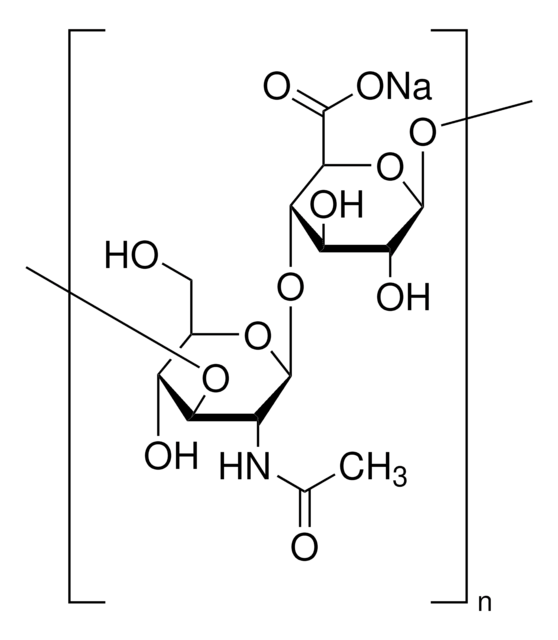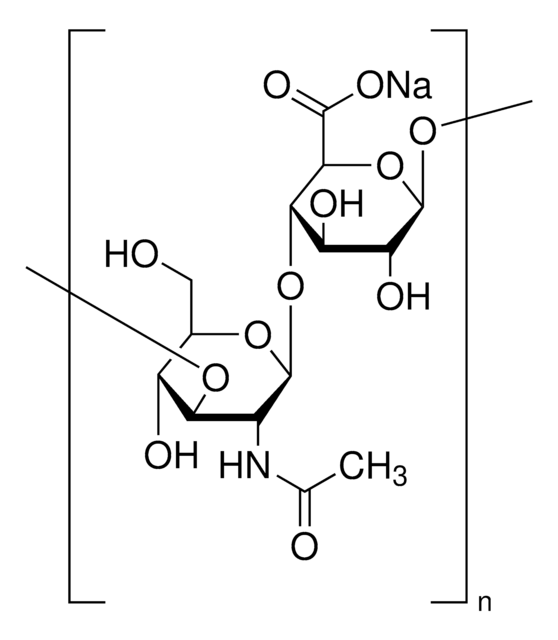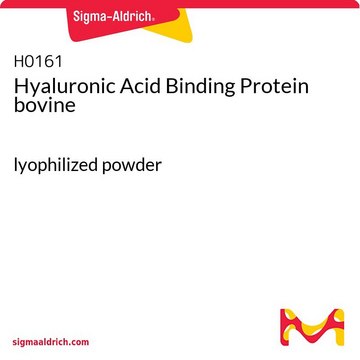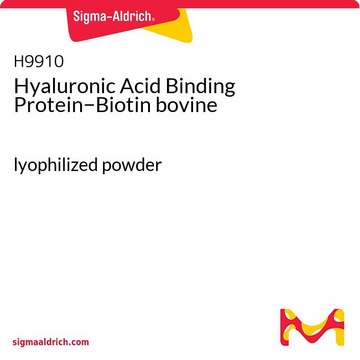H7630
Hyaluronic acid sodium salt from bovine vitreous humor
Sinônimo(s):
Poly(β-glucuronic acid-[1→3]-β-N-acetylglucosamine-[1→4]), alternating
About This Item
Produtos recomendados
fonte biológica
bovine (vitreous humor)
Nível de qualidade
forma
powder
cor
white
solubilidade
water: ~5 g/L
temperatura de armazenamento
−20°C
InChI
1S/C28H44N2O23.Na/c1-5(33)29-9-18(11(35)7(3-31)47-25(9)46)49-28-17(41)15(39)20(22(53-28)24(44)45)51-26-10(30-6(2)34)19(12(36)8(4-32)48-26)50-27-16(40)13(37)14(38)21(52-27)23(42)43;/h7-22,25-28,31-32,35-41,46H,3-4H2,1-2H3,(H,29,33)(H,30,34)(H,42,43)(H,44,45);/q;+1/t7-,8-,9-,10-,11-,12-,13+,14+,15-,16-,17-,18-,19-,20+,21+,22+,25-,26+,27-,28-;/m1./s1
chave InChI
YWIVKILSMZOHHF-QJZPQSOGSA-N
Procurando produtos similares? Visita Guia de comparação de produtos
Aplicação
- as a component for the generation of artificial synovial fluid
- to investigate its role in inducing oxidative stress and interleukin 8(IL-8) production in human nasal RPMI 2650 cells
- to test its effect on B cell proliferation
- as a substrate in neuraminidase assay of morbilliviruses virus
Ações bioquímicas/fisiológicas
Outras notas
Código de classe de armazenamento
11 - Combustible Solids
Classe de risco de água (WGK)
WGK 2
Ponto de fulgor (°F)
Not applicable
Ponto de fulgor (°C)
Not applicable
Equipamento de proteção individual
dust mask type N95 (US), Eyeshields, Gloves
Certificados de análise (COA)
Busque Certificados de análise (COA) digitando o Número do Lote do produto. Os números de lote e remessa podem ser encontrados no rótulo de um produto após a palavra “Lot” ou “Batch”.
Já possui este produto?
Encontre a documentação dos produtos que você adquiriu recentemente na biblioteca de documentos.
Os clientes também visualizaram
Artigos
Glycosaminoglycans are large linear polysaccharides constructed of repeating disaccharide units.
Nossa equipe de cientistas tem experiência em todas as áreas de pesquisa, incluindo Life Sciences, ciência de materiais, síntese química, cromatografia, química analítica e muitas outras.
Entre em contato com a assistência técnica






